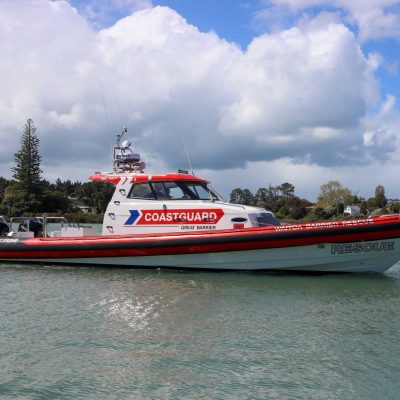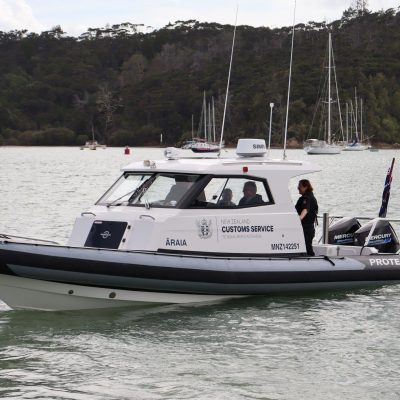Across the global maritime sector, enforcement and operational agencies are rethinking how they specify their craft – particularly the high-performance rigid inflatable boats (RIBs) in their fleets. The long-established approach of maintaining multiple specialist vessels, each dedicated to a single role, is steadily giving way to a preference for versatile platforms capable of fulfilling a wide range of assignments without sacrificing performance.
Andy Andrews, European representative for Protector Boats through PB Europe (part of the Ancasta Group), has witnessed this transformation from both sides of the industry. Following a 25-year career in the Royal Navy, he has spent years supplying and training operators in commercial RIB use, giving him a unique vantage point on how operational needs are evolving.
“We are seeing a clear move away from highly task-specific vessels,” says Andrews. “Agencies now want adaptable platforms that can be configured for diver support, cargo transport, towing, or a high-speed chase – often within the same operational cycle.”
Drivers behind the change
A combination of operational, logistical, and strategic pressures is shaping this shift toward multi-role capability:
Operational efficiency – Fewer vessels mean lower maintenance demands, reduced spare parts inventories, and simplified fleet management.
Transportability – The ability to move a vessel by trailer or within a 40-foot container enables rapid redeployment to different geographic areas.
Performance parity – As illegal operators increasingly use high-speed craft, enforcement agencies need vessels that can match or exceed those capabilities.
Equipment integration – Platforms must support surveillance systems, intelligence tools, and other specialist cargo.
All-weather operation – Consistent performance in challenging sea states ensures mission readiness year-round.
These requirements are emerging across multiple sectors, from fishery protection and harbour authorities to customs, border patrol, and commercial operations.
Expanding operational scope
While speed and handling remain central to mission success, agencies are also demanding broader capability from each vessel. Andrews points to three requirements now appearing in procurement briefs more frequently than ever:
Diver support – Including easy water access and dedicated storage for dive equipment.
Enhanced cargo capacity – For transporting gear, humanitarian aid, or specialist tools.
Increased towing capability – For recovering yachts or moving workboats.
The move toward adaptability is not theoretical – it is already visible in active fleets. In New Zealand, where Protector Boats are manufactured, the Coastguard operates a national fleet of 24 Protectors in various configurations. The Norwegian Police and New Zealand Customs Service have also adopted the platform for activities requiring both endurance and flexibility.
Customisation and crew welfare
Protector’s success in delivering multi-role craft lies in its ability to offer a high degree of customisation. Operators can specify engine type, deck layout, seating arrangements, and onboard facilities to match exact operational requirements. Importantly, the design philosophy extends to crew welfare – an increasingly recognised factor for operational endurance. Enclosed helms, climate control, bunks, and galley facilities can be integrated for extended deployments.
“Crew wellbeing is a critical factor,” says Andrews. “A vessel that offers protection from the elements and space for rest can significantly extend operational effectiveness.”
Sector implications and future outlook
This consolidation of fleets into fewer, more capable vessels is likely to have far-reaching implications for procurement, maintenance, and training. Agencies can streamline operations, reduce the complexity of spare parts management, and standardise training programs. While highly specialised single-role craft will continue to serve niche functions, Andrews believes the broader shift is irreversible.
“The operational and economic benefits are clear,” he notes. “For most agencies, a capable, adaptable, high-performance platform offers the best balance of flexibility and cost-effectiveness.”
Looking ahead, propulsion technology is expected to evolve, with more hybrid and electric systems entering service. Andrews cautions, however, that conventional propulsion still delivers the speed, range, and reliability required for most enforcement and commercial roles.
“Electric RIBs will have their place,” he says. “But for the majority of multi-role operations today, conventional systems remain essential to deliver the speed, reach and reliability required.”
As operational demands broaden and budgets tighten, adaptability will remain a defining factor in vessel design and procurement strategy. Platforms with proven multi-role capability – and the seakeeping to maintain peak performance in the harshest conditions – are set to be at the centre of maritime agency operations for some time to come.



